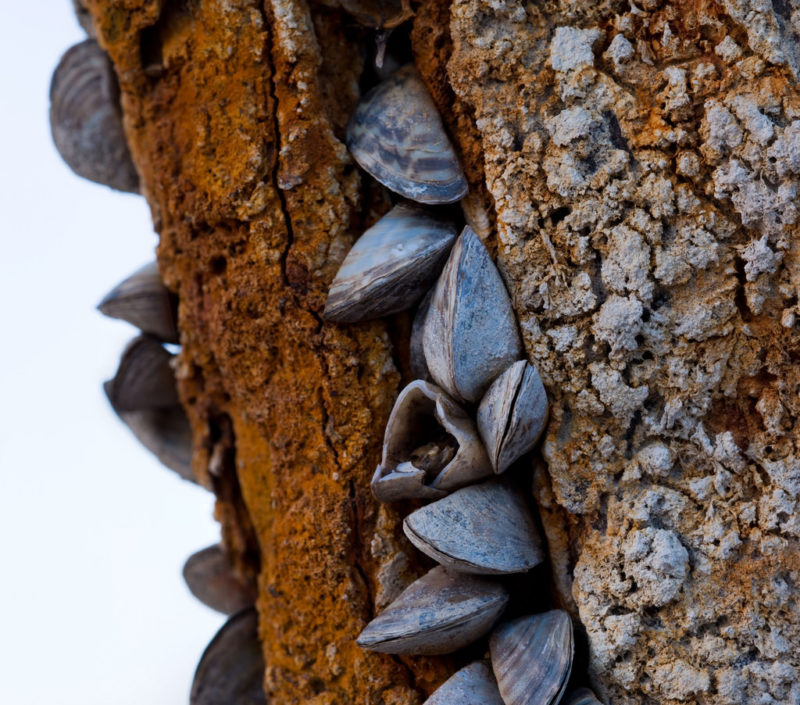


A female can lay more than 100,000 eggs in a year having few natural predators, the mussels accumulate quickly, reaching densities in the tens of thousands per square meter. While zebra mussels arguably have made the lakes prettier, in other respects they’re a pest. Since then the mussels have spread throughout the Great Lakes, much of the Mississippi River system, and even to freshwater ponds and rock quarries. Clair (between lakes Erie and Huron), the aquatic life within - including, apparently, zebra mussels - was released to the environment. When such water was mistakenly dumped into Lake St. The mussels were first spotted in the United States in 1988, allegedly having made their way here in the ballast water of one or more transoceanic ships. The zebra mussel is a freshwater bivalve that originated in Russia (it was reported in the Caspian Sea in 1769) and spread through much of northern Europe by the 20th century.

Before you start planning any scenic snorkeling trips, though, let me tell you the bad news about what’s happening to the lakes. The accompanying color change is due to an increase in Cladophora, a type of green algae that thrives on the sunlight that now penetrates farther into the lake’s depths. But you heard right - zebra mussels are filtering Lake Michigan’s once-turbid water. There’s this thing in Chicago called winter that the zebra mussels haven’t been able to do much about. Reprinted with permission from the Science Museum of Minnesota.Palm trees, no. Zebra and quagga mussels sped up that process, rapidly shifting how nutrients and energy are cycled and distributed in the lake, leading to dramatic changes in seasonality and abundance of those important and favored diatom food sources for Diporeia. Point source phosphorus control measures started in the late 1970s and 80s had already begun to limit algae growth in Lake Michigan. However, the research team also showed that the change in food resources had started before the mussel invasion. It confirmed that Diporeia had a highly selective diet Diporeia wanted to eat only the choicest diatom morsels that sank to the bottom of the lake. During the mussel invasion, Diporeia was forced to shift its diet to smaller and much less nutritious diatom species, resulting in its eventual demise as young Diporeia were unable to survive to adulthood.Ī comparison of those diets with the sediment record revealed additional telling evidence. The answer was clear based on Edlund’s diet analysis: Pre-invasion Diporeia fed almost exclusively on three types of microscopic diatom algae known for their high lipid content and abundance in spring and early summer. The team used a novel combination of diet analysis of historical Diporeia collections made in the 1980s through 2000s paired with analysis of sediment cores over the same time period to test how food resources and diets changed during the zebra and quagga mussel invasion. Diporeia are nearly gone now, and their loss led to the collapse of the Great Lakes food web.Ī recent paper in the Journal of Great Lakes Research by SEAS alumnus Mark Edlund (MS '92, PhD '98) of the Science Museum of Minnesota and colleagues David Jude and Tom Nalepa of the University of Michigan provides new clues as to why this happened. Diporeia was a keystone species, serving as the critical link between the microscopic algae they ate and the renowned Great Lakes fisheries they fed. In the depths of Lake Michigan, a small shrimp-like animal, the half-inch-long Diporeia, used to be the most abundant animal living in the bottom of the lake-averaging more than 7,000 animals per square meter. Those highly visible impacts divert our attention from other changes in the Great Lakes that are more evident in offshore waters. Beaches are now covered with shells, algae, and dead birds and fish wash up on the shoreline from botulism outbreaks. The introduction of zebra mussels and the closely related quagga mussel to the Great Lakes changed everything.


 0 kommentar(er)
0 kommentar(er)
